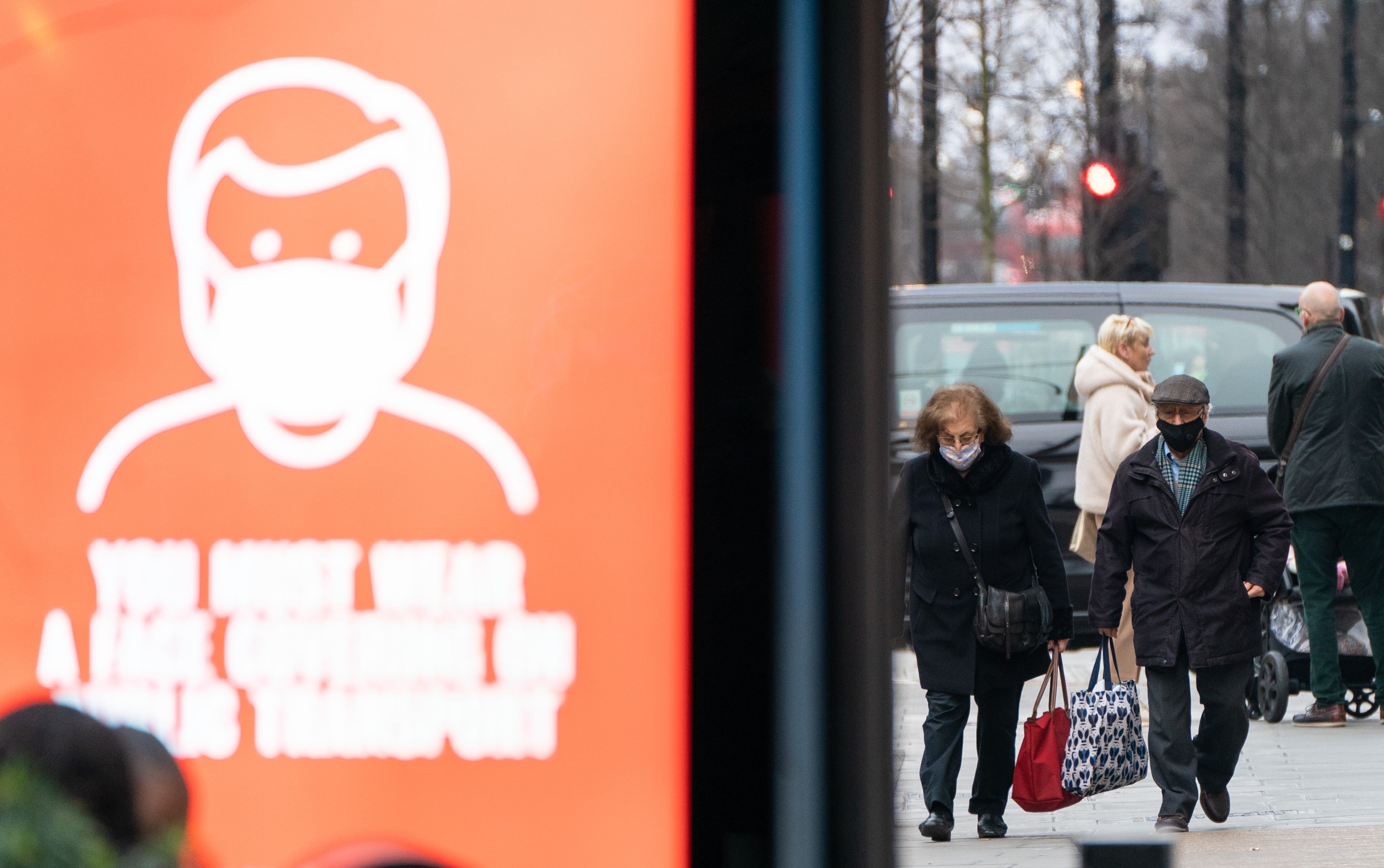UK health chiefs say recommended Covid isolation is one day shorter in US
The UKHSA had previously said the UK’s isolation period was effectively in line with the US, amid calls to slash it to five days

Your support helps us to tell the story
From reproductive rights to climate change to Big Tech, The Independent is on the ground when the story is developing. Whether it's investigating the financials of Elon Musk's pro-Trump PAC or producing our latest documentary, 'The A Word', which shines a light on the American women fighting for reproductive rights, we know how important it is to parse out the facts from the messaging.
At such a critical moment in US history, we need reporters on the ground. Your donation allows us to keep sending journalists to speak to both sides of the story.
The Independent is trusted by Americans across the entire political spectrum. And unlike many other quality news outlets, we choose not to lock Americans out of our reporting and analysis with paywalls. We believe quality journalism should be available to everyone, paid for by those who can afford it.
Your support makes all the difference.Calls are growing to cut the number of days a person should isolate with Covid as health officials clarified the recommended quarantine period is shorter in the US than in the UK.
Boris Johnson has said he would “act according to the science” on potentially reducing the time period to five days, a measure which could help deal with staff absences across the economy and public services.
The UK Health Security Agency (UKHSA) has previously said the isolation period was effectively the same in both the UK and the US, but it has now updated a blog post on the subject clarifying the discrepancy in relation to the starting point for isolation.
The UK health body acknowledged that while here the advice is to isolate for at least six full days, in the US people are asked to isolate for five full days.
But the agency said it believes people staying in isolation until they get two negative lateral flow results on days six and seven remains “the optimal approach at present”.
The Prime Minister has been facing calls from MPs and business chiefs to follow suit in the UK in order to help ease staff absences across the economy and public services.
The isolation period has already been cut from 10 days to seven, and on Monday Mr Johnson’s official spokesman said “if it is possible to go further then we will do so”.
Chancellor Rishi Sunak is among ministers keen on the economic benefits of reducing the period to five days, according to the Daily Telegraph, while Education Secretary Nadhim Zahawi has suggested the move could help ease staffing problems.
On Tuesday an educational leader said she would be in favour of the isolation period in England being cut to five days as schools face staff shortages.
The UKHSA had initially said the recommended minimum of six full days in the UK was counted from the onset of symptoms, while in the US, the five-day isolation began from the day of a positive test, which could be several days after the first symptoms.
However, in an updated blog post, it now states: “In the UK our advice is to self-isolate for at least six full days from the point at which you have symptoms or get a positive test, whichever is first.”
It continued: “In the United States, the advice is to isolate for at least five full days from the same point.”
The blog post concludes: “We believe that allowing people to leave self-isolation after two negative lateral flow tests on days six and seven is the optimal approach at present. This supports people who are unlikely to be infectious to go back to work and resume other activities, but continues to protect the wider population from infection.”
The UKHSA said it made the correction after the US CDC (Centers for Disease Control and Prevention) clarified that its isolation period started when symptoms first appeared.
The CDC cut the recommended isolation period there to five days in December.
Dame Maura Regan, chief executive officer of Bishop Hogarth Catholic Education Trust, said she would be in favour of a reduced isolation period, saying “one of the biggest challenges” currently is “effective supply cover”.
She told BBC Radio 4’s Today programme that: “I think the most important thing we have to remember is that while it’s significant for all children, it’s particularly significant for those students that are actually facing exams, and many of them have had two, two-and-a-half years of disruption and to then have a lack of quality teaching is actually greater disruption for them.”
The UKHSA is leading work on the isolation issue along with the Government’s Covid taskforce based in the Cabinet Office.
On the change to its blog post, a UKHSA spokesperson said: “We updated our blog following clarification from the CDC on their isolation guidance on January 4.
“Our current guidance of releasing individuals from isolation on day seven with two negative lateral flow test results taken 24 hours apart has a low risk of an individual being released infectious – similar to the risk of being infectious after 10 days isolation.
“In the US people are asked to isolate for five full days, in the UK the advice is to isolate for six full days.”